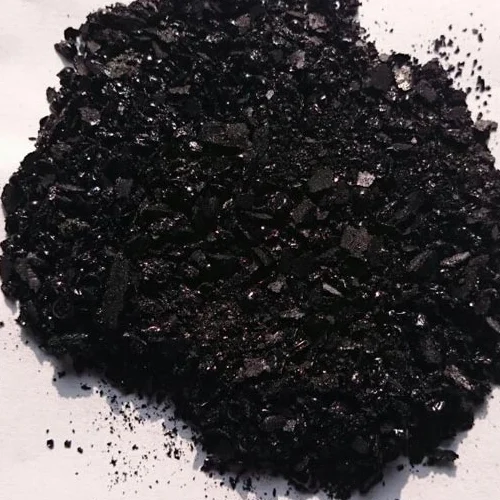From Indigo Plants to Textile Dyeing Production Facilities
The Indigo Plant A Journey from Nature to Dye Factories
The indigo plant, a humble yet extraordinary botanical marvel, has significantly shaped the world of textiles and color for millennia. Known scientifically as Indigofera tinctoria, this plant is the source of one of the oldest and most revered natural dyes, indigo blue. The story of the indigo plant is not merely one of agricultural cultivation, but a complex tapestry that weaves together history, culture, and industry, culminating in the dye factories that produce this vibrant color today.
The Historical Significance of Indigo
The use of indigo as a dye dates back thousands of years. Ancient civilizations, notably in India, Egypt, and Mesopotamia, recognized the striking properties of the indigo plant long before it became a commodity. Rituals and daily life were often intertwined with indigo-dyed fabrics, signifying wealth, status, and cultural identity.
In India, for example, indigo dyeing has been practiced since at least the 5th century BCE. The vibrant hue became emblematic of the region's textiles, inspiring patterns that are now synonymous with traditional Indian clothing. Over time, the indigo trade flourished, leading to the establishment of entire industries dedicated to the cultivation of the indigo plant and the production of its dye.
Cultivation of the Indigo Plant
The indigo plant thrives in tropical and subtropical climates, making it suitable for cultivation in regions like India, Africa, and parts of South America. Farmers often grow indigo as a cash crop, and its cultivation requires a penetration of knowledge regarding soil, temperature, and seasonal cycles.
After harvesting, the leaves of the indigo plant undergo a fermentation process to release the pigment known as indican. This process is crucial, as it transforms the green leaves into a rich, blue dye. The fermentation begins when the leaves are soaked in water, allowing bacteria to convert the indican into indigo dye. This natural process not only showcases the plant's unique characteristics but also aligns with sustainable practices that minimize environmental impact.
From Plant to Dye Factory The Industrial Revolution
The Industrial Revolution heralded a new era for indigo. As demand for cotton and textiles surged, the methods of dye production evolved. The traditional techniques of hand-dyeing were supplemented by mechanization in dye factories, increasing scalability and efficiency. Factories began using synthetic indigo developed in the late 19th century, which, while cost-effective, could not replicate the depth and richness of the natural dye.
indigo plant to dye factories

Despite the advent of synthetic alternatives, there has been a resurgence in the popularity of natural indigo dyeing in recent years. Eco-conscious consumers and artisans are increasingly turning back to traditional techniques, seeking the authenticity and environmental benefits of naturally sourced colors. This shift has spurred a renaissance in indigo farming, as artisans and small producers couple the craftsmanship of hand-dyeing with modern sustainable practices.
Modern Dyeing Techniques in Factories
Today, dye factories are witnessing a fusion of tradition and technology. Modern dyeing techniques employ both automated processes and bespoke methods, enhancing efficiency while respecting the age-old craftsmanship associated with indigo dyeing. Factories are now equipped with precision tools that allow for replicability and quality control, ensuring consistent color across large batches.
Moreover, environmental regulations have prompted factories to adopt greener practices. Wastewater treatment technologies and sustainable sourcing initiatives are now integral to many modern dye factories, mitigating the ecological footprint of dye production.
The Cultural Revival of Indigo
The rising interest in natural indigo is also part of a broader cultural revival, where consumers are more mindful of the origins of their clothing and the environmental impact of their choices. The indigo plant symbolizes not just a color, but a connection to artisan communities, traditional methods, and a more sustainable future.
Collaborations between designers and craftsmen are increasingly common, creating a vibrant marketplace for indigo-dyed goods. This return to the roots of indigo, combined with innovative practices in dye factories, ensures that this age-old craft will continue to thrive in the modern textile industry.
Conclusion
The indigo plant embodies a rich heritage that traverses the realms of agriculture, culture, and industry. From its indigenous cultivation to the bustling dye factories that now nurture its legacy, indigo continues to mesmerize and inspire. As we embrace a more sustainable and mindful approach to fashion and textiles, the story of the indigo plant will indelibly color our journey towards a harmonious relationship with nature and our resources.
-
The Timeless Art of Denim Indigo Dye
NewsJul.01,2025
-
The Rise of Sulfur Dyed Denim
NewsJul.01,2025
-
The Rich Revival of the Best Indigo Dye
NewsJul.01,2025
-
The Enduring Strength of Sulphur Black
NewsJul.01,2025
-
The Ancient Art of Chinese Indigo Dye
NewsJul.01,2025
-
Industry Power of Indigo
NewsJul.01,2025
-
Black Sulfur is Leading the Next Wave
NewsJul.01,2025

Sulphur Black
1.Name: sulphur black; Sulfur Black; Sulphur Black 1;
2.Structure formula:
3.Molecule formula: C6H4N2O5
4.CAS No.: 1326-82-5
5.HS code: 32041911
6.Product specification:Appearance:black phosphorus flakes; black liquid

Bromo Indigo; Vat Bromo-Indigo; C.I.Vat Blue 5
1.Name: Bromo indigo; Vat bromo-indigo; C.I.Vat blue 5;
2.Structure formula:
3.Molecule formula: C16H6Br4N2O2
4.CAS No.: 2475-31-2
5.HS code: 3204151000 6.Major usage and instruction: Be mainly used to dye cotton fabrics.

Indigo Blue Vat Blue
1.Name: indigo blue,vat blue 1,
2.Structure formula:
3.Molecule formula: C16H10N2O2
4.. CAS No.: 482-89-3
5.Molecule weight: 262.62
6.HS code: 3204151000
7.Major usage and instruction: Be mainly used to dye cotton fabrics.

